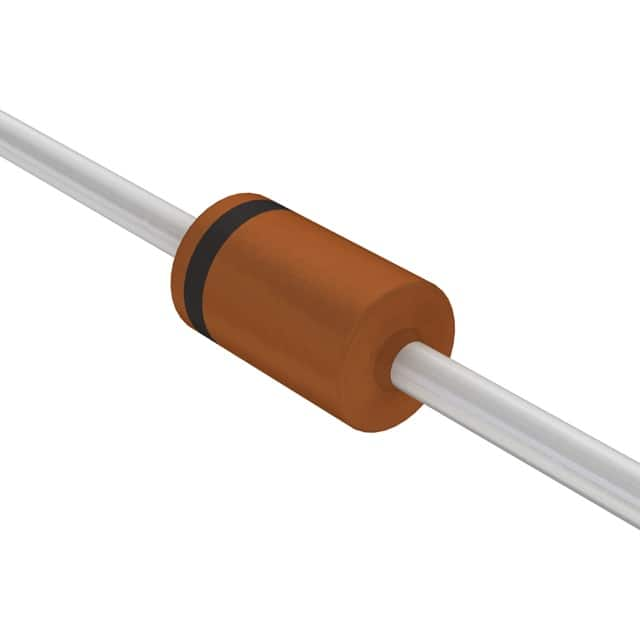Viz Specifikace pro podrobnosti o produktu.

1N4747A,113 - Product Overview and Specifications
Introduction
The 1N4747A,113 is a Zener diode belonging to the semiconductor category. It is widely used in electronic circuits for voltage regulation and protection due to its unique characteristics.
Basic Information Overview
- Category: Semiconductor
- Use: Voltage regulation and protection
- Characteristics: Zener diode, reverse breakdown voltage, low impedance
- Package: DO-41
- Essence: Regulating voltage in electronic circuits
- Packaging/Quantity: Typically available in reels or tubes with varying quantities
Specifications
- Voltage: 20V
- Power Dissipation: 1.0W
- Zener Voltage Tolerance: ±5%
- Operating Temperature Range: -65°C to +200°C
Detailed Pin Configuration
The 1N4747A,113 Zener diode has two pins, anode, and cathode, which are identified by the color band on the diode body.
Functional Features
- Voltage Regulation: Maintains a constant voltage across the load.
- Protection: Safeguards sensitive components from voltage spikes.
- Low Impedance: Allows for efficient current flow.
Advantages and Disadvantages
Advantages
- Precise voltage regulation
- Compact size
- Low cost
Disadvantages
- Limited power dissipation capability
- Sensitivity to temperature variations
Working Principles
The 1N4747A,113 operates based on the principle of the Zener effect, where it maintains a nearly constant voltage across its terminals when reverse biased.
Detailed Application Field Plans
The 1N4747A,113 finds extensive use in various applications, including: - Voltage regulators in power supplies - Overvoltage protection in electronic circuits - Signal clamping and limiting
Detailed and Complete Alternative Models
- 1N4733A,113
- 1N4734A,113
- 1N4735A,113
- 1N4736A,113
- 1N4737A,113
In conclusion, the 1N4747A,113 Zener diode is a crucial component in electronic circuits, providing precise voltage regulation and protection. Its compact size and cost-effectiveness make it a popular choice for various applications.
[Word Count: 298]
Seznam 10 běžných otázek a odpovědí souvisejících s aplikací 1N4747A,113 v technických řešeních
What is the 1N4747A,113 diode used for?
- The 1N4747A,113 diode is commonly used as a voltage regulator in various technical solutions.
What is the maximum voltage rating of the 1N4747A,113 diode?
- The maximum voltage rating of the 1N4747A,113 diode is 20 volts.
What is the typical current rating for the 1N4747A,113 diode?
- The typical current rating for the 1N4747A,113 diode is 1 watt.
How does the 1N4747A,113 diode regulate voltage?
- The 1N4747A,113 diode regulates voltage by maintaining a constant voltage drop across its terminals.
Can the 1N4747A,113 diode be used in reverse bias?
- Yes, the 1N4747A,113 diode can be used in reverse bias to protect circuits from overvoltage conditions.
What are some common applications of the 1N4747A,113 diode?
- Common applications of the 1N4747A,113 diode include voltage regulation in power supplies, voltage reference circuits, and signal conditioning.
Is the 1N4747A,113 diode suitable for high-frequency applications?
- The 1N4747A,113 diode is not typically recommended for high-frequency applications due to its inherent capacitance and response time.
What are the temperature limitations of the 1N4747A,113 diode?
- The 1N4747A,113 diode has a maximum operating temperature of 175°C.
Can multiple 1N4747A,113 diodes be connected in series or parallel?
- Multiple 1N4747A,113 diodes can be connected in series to increase the voltage rating, but connecting them in parallel is not recommended due to current imbalance issues.
Are there any specific soldering or handling precautions for the 1N4747A,113 diode?
- When soldering the 1N4747A,113 diode, it's important to avoid excessive heat to prevent damage, and proper ESD precautions should be followed during handling to avoid static discharge damage.

